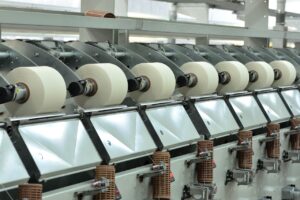What is Imperfection or IPI in Textile yarn

Imperfection or IPI (Imperfections per 1000 meters) in yarn refers to the presence of flaws, defects, or irregularities found within a length of yarn. These imperfections can include thick or thin sections, knots, slubs, neps, or other irregularities. This affect the uniformity and quality of the yarn. The IPI measurement quantifies these imperfections, often used as a standard to assess the quality and consistency of the yarn produced. Lower IPI values indicate higher quality yarn with fewer imperfections.
Imperfections or IPI indicate the evenness or unevenness in yarn. If the IPI / Imperfection level is high in yarn it indicates that the quality of yarn is not good. If the imperfection or IPI count is less, it reflects the good quality yarn.
A lot of people ask about how to calculate or count the imperfection. counting is very simple after reading our post.
To find the imperfection in yarn you need to have its Uster Testing Report. There you will find several columns like U%, cvb, thin, thick, neps and hairiness Etc.
Usually for ring spun yarn to count the imperfection index we take the total of (Thin-50% + Thick+50% + Neps+200 per kilometer). The total of these three parameters is called imperfection or IPI.
For Open End or Autocoro yarn to count the imperfection index we take the total of (Thin-50% + Thick+50% + Neps+280 per kilometer). The total of these three parameters is called imperfection or IPI.
Understanding the Impact of Yarn Imperfections on Fabric Quality
Imperfections in yarn can significantly impact the quality and appearance of the fabric produced. Here are some ways imperfections can affect the fabric:
- Aesthetic Appeal: Imperfections like thick or thin sections, knots, or slubs can create visible irregularities on the fabric surface, affecting its overall appearance.
- Strength and Durability: Areas with imperfections might be weaker than the rest of the fabric, leading to potential weaknesses and reduced durability, especially in those specific spots.
- Uniformity: Yarn imperfections can disrupt the uniformity of the fabric, causing variations in texture, color, or pattern across the material.
- Comfort: Rough or irregular areas in the fabric caused by yarn imperfections can cause discomfort when in contact with the skin.
- Performance: Fabrics with imperfections might not perform as expected in terms of drape, elasticity, or other functional properties.
In essence, imperfections in yarn can compromise the overall quality, appearance, durability, and performance of the fabric. This may influence its market value and consumer acceptance. Manufacturers aim to minimize imperfections during the yarn production process to produce higher-quality fabrics.
